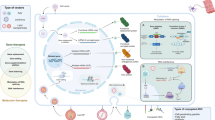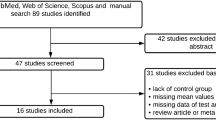Summary
Three monoclonal antibodies, LM5, F2 and F39 raised to chicken fast skeletal muscle myosin, specific for myosin heavy chain (MHC) subunit, were used to study the composition and distribution of this protein in some vertebrate skeletal muscles. These antibodies in immunohistochemical investigations did not react with the majority of the type I fibres in most muscles. Antibodies LM5 and F39 stained all the type II fibres in all the adult chicken skeletal muscles studied. Antibody F2 also stained all the type II fibres in most chicken skeletal muscles tested except in gastrocnemius in which a proportion of both the type IIA and IIB fibres either did not stain or stained only weakly. Antibody F2 unlike LM5 and F39 stained most of the type IIIB fibres in anterior latissimus dorsi (ALD) and IB fibres in red strip of chicken Pectoralis muscle. Antibodies LM5 and F2 in the rat diaphragm reacted with all the type IIA and IIB fibres, while antibody F39 stained only the type IIB fibres darkly with most IIA fibres being either not stained or only weakly stained. In the rat extensor digitorum longus (EDL) and tibialis anterior (TA) muscles, antibody LM5 stained all the IIA and IIB fibres. Antibody F2 in these muscles stained all the type IIA fibres but only a proportion of the IIB fibres. The remaining IIB fibres were either unstained or only weakly positive. Antibody F39 in rat EDL and TA muscles did not only distinguish subgroups of IIB fibres (dark, intermediate and negative or very weak) but also of the IIA fibres. These three antibodies used together therefore detected a great deal of heterogeneity in the myosin heavy chain composition and muscle fibre types of several skeletal muscles.
Similar content being viewed by others
References
Bar A, Pette D (1988) Three fast myosin heavy chains in adult rat skeletal muscle. FEBS Lett 235:153–155
Barnard EA, Lyles JM, Pizzey JA (1982) Fibre types in chicken skeletal muscles and their changes in muscular dystrophy. J Physiol 331:333–354
Billeter R, Heizmann CW, Howald H, Jenny E (1981) Analysis of light and heavy chain types in single human skeletal muscle fibers. Eur J Biochem 116:389–395
Brooke MH, Kaiser KK (1970) Muscle fiber types: how many and what kind? Arch Neurol 23:369–379
Dhoot GK (1988) Changes in the distribution of slow skeletal myosin heavy chain SM1 in developing avian muscle fibres. J Muscle Res Cell Motil 9:120–131
Dhoot GK (1989) Evidence for the presence of a distinct embryonic isoform of myosin heavy chain in chicken skeletal muscle. Differentiation 40:176–183
Dubowitz V, Brooke MH (1973) Muscle biopsy: a modern approach. Saunders, London Philadelphia Toronto, p 32
Eisen A, Karpati G, Carpenter S (1975) Reserpine induced alteration of physiological properties and histochemical fibre types in rat skeletal muscle. Exp Neurol 46:554–565
Guth L, Samaha FJ (1969) Qualitative differences between actomyosin. ATPase of slow and fast mammalian muscle. Exp Neurol 25:138–152
Hoh JFY, Hughes SM (1988) Myogenic and neurogenic regulation of myosin gene expression in cat jaw-closing muscles regenerating in fast and slow muscle beds. J Muscle Res Cell Motil 9:59–72
Kilby K, Dhoot GK (1988) Identification and distribution of some developmental isoforms of myosin heavy chain in avian muscle fibres. J Muscle Res Cell Motil 9:516–524
Laemmli UK (1970) Cleavage of structural proteins during the assembly of the head of bacteriophage T4. Nature 227:680–685
Leung B, Kula RW, Shafiq SA (1987) Fibre types in normal and neonatally denervated fast muscles of the rat-immunocytochemical study with an antimyosin monoclonal antibody. Exp Neurol 97:429–440
Mabuchi K, Mabuchi Y, Sreter FA, Gergely J (1988) Subdivisions of leg type 2B fibres in rabbit and rat skeletal muscles. Biophys J 53:179a
Mascarello F, Carpene E, Veggetti A, Rowlerson A, Jenny E (1982) The tensor tympani muscle of cat and dog contains IIM and slow tonic fibres: an unusual combination of fibre types. J Muscle Res Cell Motil 3:363–374
Miller JB, Crow MT, Stockdale F (1985) Slow and fast myosin heavy chain content defines three types of myotubes in early muscle cell cultures. J Cell Biol 101:1643–1650
Nguyen HT, Gubits RM, Wydro RM, Nadal-Ginard B (1982) Sarcomeric myosin heavy chain is coded by a highly conserved multigene family. Proc Natl Acad Sci USA 79:5230–5234
Pette D, Staron RS (1990) Cellular and molecular diversities of mammalian skeletal muscle fibers. Rev Physiol Biochem Pharmacol 116:1–75
Round JM, Matthews Y, Jones DA (1980) A quick, simple and reliable histochemical method for ATPase in human muscle preparation. Histochem J 12:707–710
Schantz P, Dhoot GK (1987) Coexistence of slow and fast isoforms of contractile and regulatory proteins in human skeletal muscle fibres induced by endurance training. Acta Physiol Scand 131:147–154
Schiaffino S, Saggin L, Viel A, Gorza L (1985) Differentiation of fibre types in rat skeletal muscle visualised with monoclonal antimyosin antibodies. J Muscle Res Cell Motil 6:60–61
Schiaffino S, Gorza L, Sartore S, Saggin L, Ausoni S, Vianello M, Gundersen K, Lomo T (1989) Three myosin heavy chain isoforms in type 2 skeletal muscle fibres. J Muscle Res Cell Motil 10:197–205
Staron RS, Pette D (1986) Correlation between myofibrillar AT-Pase activity and myosin heavy chain composition in rabbit muscle fibers. Histochemistry 86:19–23
Termin A, Staron RS, Pette D (1989) Changes in myosin heavy chain isoforms during chronic low-frequency stimulation of rat fast hindlimb muscles — a single fiber study. Eur J Biochem 186:749–754
Wieczorek DF, Periasamy M, Butler-Browne GS, Whalen RG, Nadal-Ginard B (1985) Co-expression of multiple myosin heavy chain genes, in addition to a tissue-specific one, in extraocular musculature. J Cell Biol 101:618–629
Author information
Authors and Affiliations
Rights and permissions
About this article
Cite this article
Williams, K., Dhoot, G.K. Heterogeneity and distribution of fast myosin heavy chains in some adult vertebrate skeletal muscles. Histochemistry 97, 361–370 (1992). https://doi.org/10.1007/BF00270039
Accepted:
Issue Date:
DOI: https://doi.org/10.1007/BF00270039




